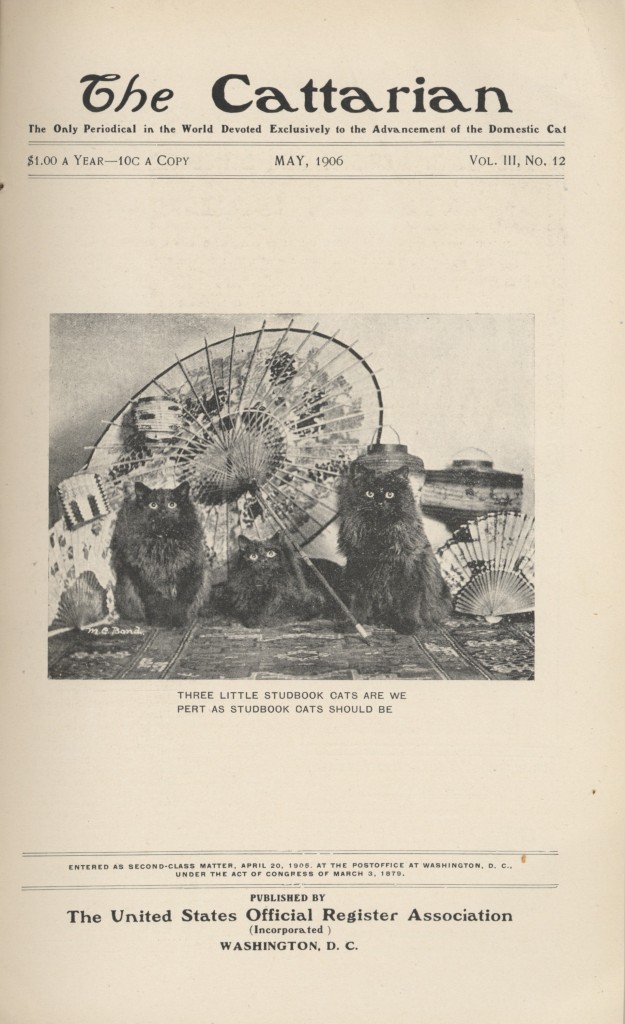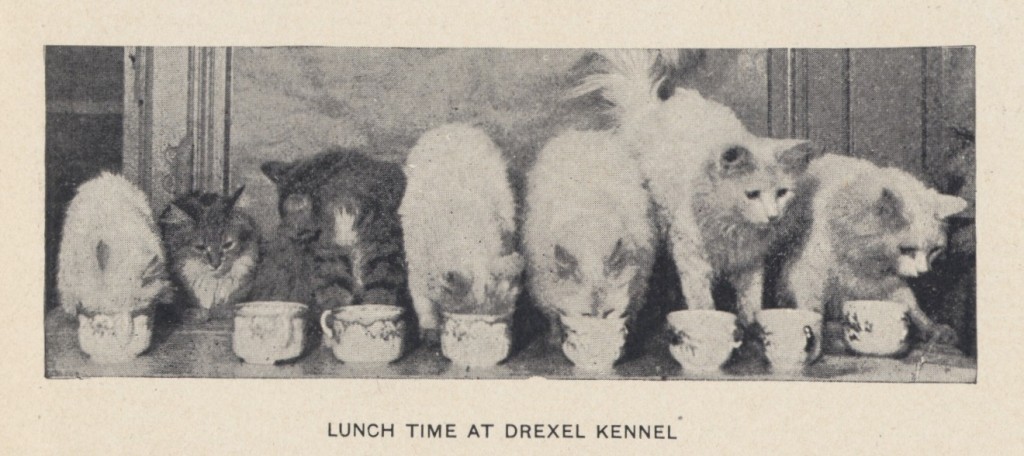It’s not obvious why some items are special enough to be in Vassar’s Archives and Special Collections Library. The cuneiform tablets: obviously special. Vassar’s copy of the U.S. Constitution? Yup, special. The first editions of Dickens? In original serial form? Without a doubt, special. But what about The Fortnightly Cattarian? Weird? Yes. Wacky fun? Indubitably. But should it be in Special Collections? The answer is yes, but why? Let’s investigate.
The Fortnightly Cattarian, “a magazine devoted to the advancement of the domestic cat,” was published from 1903-1907. Its founder and editor, Mabel Cornish Bond, was a physician, parasitologist and (much later) an analyst specializing in the “Psychic Re-education Method of Jung.” Between the Cattarian’s covers, the cat fancier of the day could find news of prominent cat clubs and catteries, advertisements for kittens and cat studs, advice on cat care, cat-centric humor, and updates on cat-related legislation.
The key to why we have the Cattarian here in Special Collections is nestled in the middle of the last paragraph: Mabel Cornish Bond. Among her other claims to fame, Bond was a member of Vassar’s Class of 1889. One component of our rare book collection is the Vassar College Alumnae/i Collection, which includes a variety of material published by our graduates. So, even if the Cattarian‘s only possible use was telling us something about Mabel Cornish Bond, that would be enough to keep it in our collection. [We can’t actively collect the work of every Vassar graduate, but what we do have is an important source of information on our alumnae/i and their life beyond Vassar.]
But the Cattarian tells us about more than Mabel Bond. Ever wonder how our country became so obsessed with pets? The Cattarian might offer some clues – or at least raise some constructive questions. By the turn of the century, when Bond was developing her public interest in cats, the world of “cat fancy” (the appreciation and/or breeding of cats) was expansive and varied. There were national and local cat clubs, a myriad of cat-related magazines, and annual cat shows in several major cities (though, ironically, many cat shows were in conjunction with poultry exhibitions). This makes the world of the cat seem awfully cheerful, but in reality, it concealed a darker situation. A piece Bond wrote in 1903 about conditions at some of those cat shows reveals that many cats didn’t survive the festivities. Dangerous means of transport, poor ventilation, fluctuating temperatures, bad food, and easily spread disease made cat shows a perilous proposition for many cats. While cat fanciers were ramping up the cat shows and taking cute pics of their (surviving) tabbies for magazines, the ASPCA was in the early years of its war against animal cruelty, and the first professional American veterinarians were trying to bring order to the world of animal health. Mabel Bond used the Cattarian to bridge the world of cat fancy and animal welfare, combining her medical knowledge with a love of felines to improve the lot of U.S. cats.
The Cattarian is an artifact from an era of change in the world of domestic animals. It might have some really silly pictures of kitties, but we’re pleased and proud to have it in our Special Collections.
Laura Streett is the Archivist at Vassar College Libraries. Contact her at lastreett AT vassar.edu.




This information is worth everyone’s attention.
Where can I find out more?
I want to voice my love for your generosity giving support to individuals that actually need help with in this area. Your personal commitment to passing the message all through became remarkably productive and have enabled guys much like me to realize their targets. The useful instruction signifies so much to me and a whole lot more to my mates. Warm regards; from all of us.